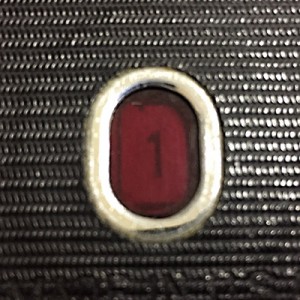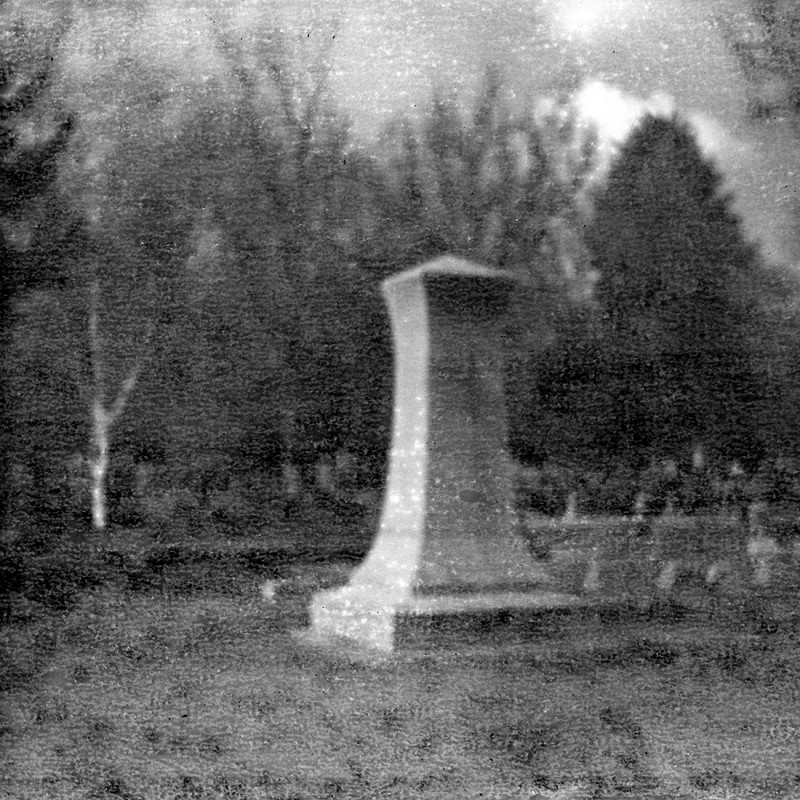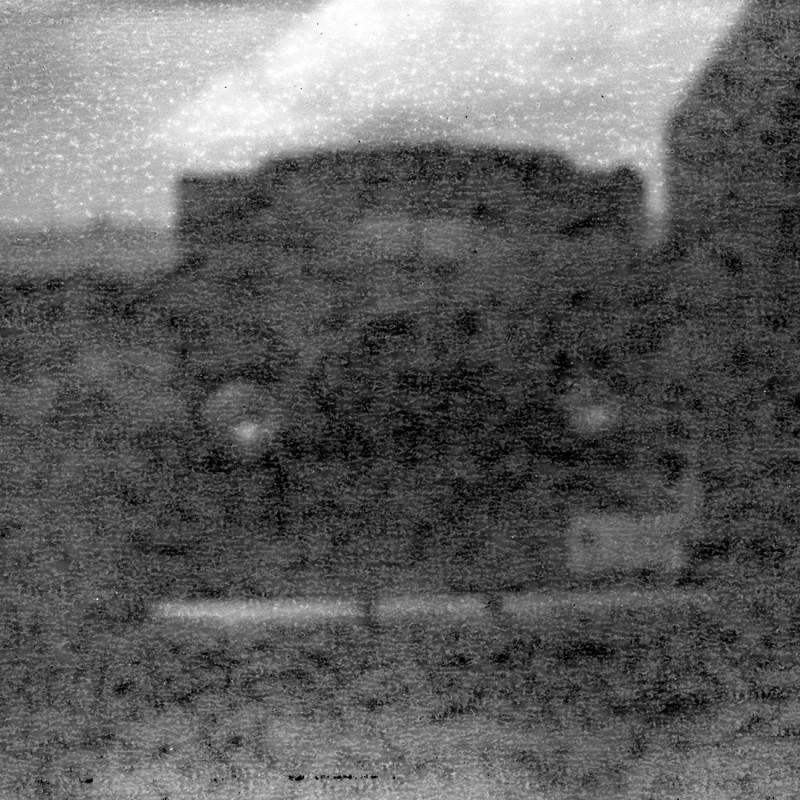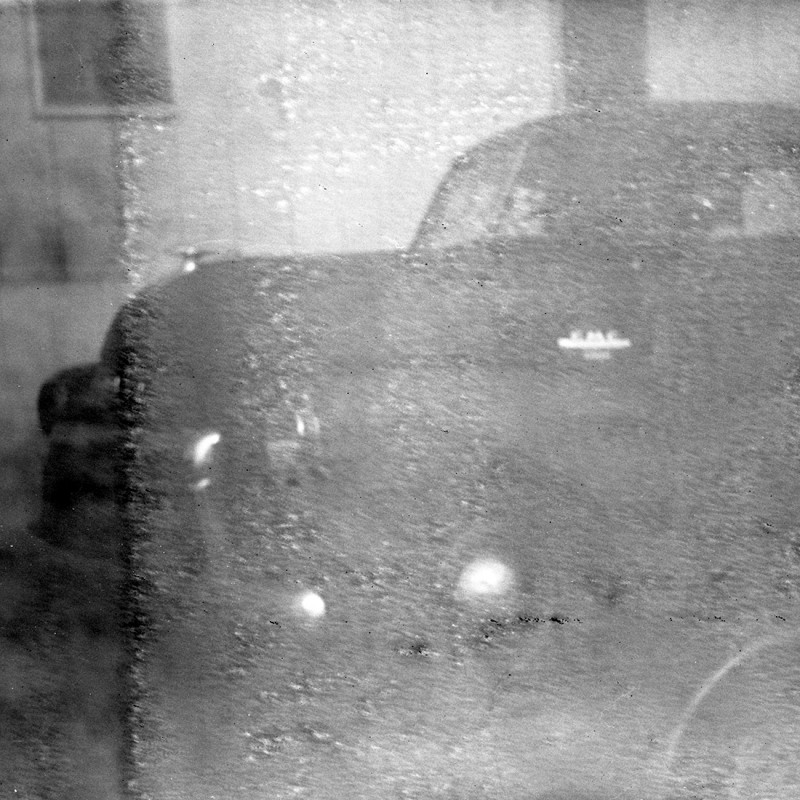
I found this roll of Agfa Isopan FF, still sealed in its pressed steel canister, at an antique store about six years ago. It went right into the fridge in anticipation of a reason to use it.
Expired Film Day was that reason, and I’d be lying if I said this roll of film wasn’t part of what inspired the event. I had high hopes that everything would go well with the film, and for the most part, it did.
I shot the film in daylight using a period-appropriate Agfa B2 Speedex camera, a folding 6×6 120 camera. I carefully tested the shutter and inspected the aperture and bellows. I found a very tiny pinhole, but didn’t expect it to be a problem if I made sure to keep the camera closed. Aperture and shutter were good — in fact, surprisingly accurate.

I loaded the film and the troubles began. I hadn’t thought to test the film advance very thoroughly — it started off okay, but as soon as I closed the back it started to grind. The further I got through the roll, the more difficult it became to advance. I wasn’t sure if it was the film or not, but I moved it ahead very gently and managed to make it through the roll.
After I finished the roll I tried the advance without any film in the camera and discovered it was just the knob. Whatever it passes through between the top cover and the film bay is gummed up or something. I added a tiny drop of light machine oil to it and worked it in, but the improvement was only marginal. I will probably retire this camera to shelf duty — or maybe sell it.
Isopan FF was ASA 16 film — slow even by the standards of its day. The lowest my iPhone light meter app goes is ASA 8, so I rated it at that and planned to push it some in development. Unfortunately, I couldn’t really find much in the way of development times.
I did come across some old Agfa documentation that claimed Rodinal at 1:10 for 16 minutes would do the trick. Then it appeared that it was a typo and that time was really for Rodinal at 1:100. I did some comparisons between other films’ Rodinal 1:100 development times, and then averaged the times for those same films in HC-110 at 1:63. I came up with something like 8 minutes. I have no idea if that’s even remotely right.
Since the film was approximately 60 years old, and I was only able to (easily) rate it down by one stop, I hoped to push it a stop or two, as well. So I developed it for 10.5 minutes at 20°C, agitating for the first full minute and then three inversions every minute.
My results were a lot better than what I got out of the Kodak Super-XX I tried at the same time. Unfortunately, they were still not that great. The film was obviously fogged a lot.
So fogged, in fact, that the results were hardly sharp. Of course, the scale focusing on the B2 Speedex probably didn’t help. I did my best, but missed a few. And for the first half of the roll I managed to think that the scale was written in meters rather than feet. The camera was made during the years when Agfa and Ansco were in bed, and made for the American market. The scale isn’t marked feet or meters, but I realized it was pretty unlikely that the minimum focusing distance was 3.5 meters and treated it as if it were marked in feet.

I shot most of the roll at f/8, and didn’t do too many close-ups, so most of it should’ve been fairly sharp even if I missed the focus by a ways. As you can see below, though, the grain and fogging are so bad it’s difficult to make out the edges, whether they’re sharp or not.
Additionally, the developed negatives are quite dark. I think I overdeveloped them by quite a bit. I may have unintentionally pushed the film a couple stops more than I thought. Interestingly, the edge markings appear nearly as dark as the rest of the film — leading me to think fogging was to blame for a lot of the damage.
I decided to simply post the entire roll in the order I exposed it, with the best captions I can come up with. I didn’t take shot-by-shot notes on this roll, and some of the photos are difficult to see much of anything in. There are lots of speckles, both black and white, on the film, which are clear evidence of severe damage to the film (I can rule out air bubbles and issues with the developer and fixer, because I used the same developer and fixer for several other rolls of film that came out just great).
I didn’t get any great results. In fact, I’m a little disappointed given how long I waited to try this stuff. I had to adjust the exposure a bit in Photoshop to make much of anything of these photographs, and I’ll certainly never try to make any prints. Nevertheless, a fun exercise and I don’t regret trying this ancient film one bit.
The rest of my Expired Film Day film is curled quite badly, so I’ve got the negatives between the pages of an Edward Weston book, with plenty of other books piled one top by folks like Walker Evans, Robert Adams, Ansel Adams, and so on. Maybe my photographs will improve through osmosis…
Other Expired Film Day 2016 posts:
- 2003 Kodak Plus-X 125 (Agfa)
- 2003 Kodak Plus-X 125 (Leica)
- 1977 Kodak Kodacolor II film
- 1956 Kodak Super-XX 616 film











